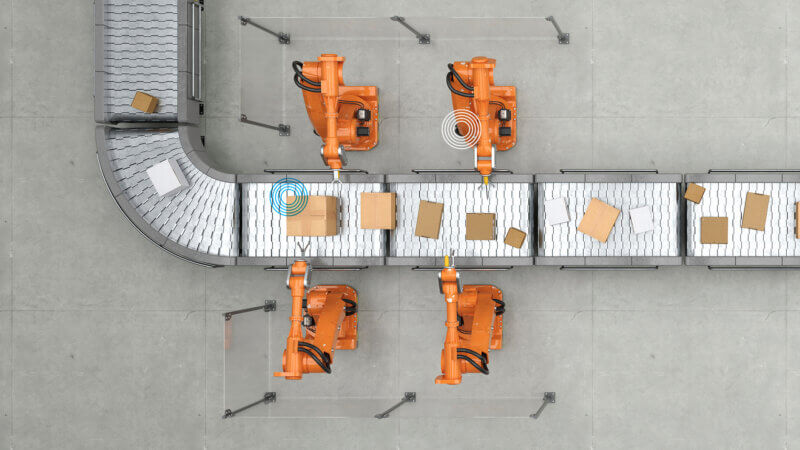Industrie 4.0 und Automatisierung mit RFID-Technologien von Metratec
Radio Frequency Identification (RFID) ermöglicht die drahtlose Übertragung von Daten zwischen einem Lesegerät und einem sogenannten „RFID-Tag“. RFID-Tags bestehen aus einer Antenne und einem Mikrochip und sind in der Lage , eine eindeutige Identifikationsnummer sowie eine Handvoll an Daten zu speichern.
Die Einsatzmöglichkeiten von RFID sind nahezu unbegrenzt und reichen von der klassischen Anwendung in der Logistik bis hin zu Zugangssystemen, der Tieridentifikation, bargeldlosen Finanztransaktionen oder im Einzelhandel. Der große Vorteil von RFID im Vergleich zu anderen Identifikationssystemen ist die Möglichkeit, Daten über eine gewisse Distanz ohne Sichtkontakt auszulesen und den gesamten Prozess der Datenübermittlung zu automatisieren. Diese Lese-Event bilden die Grundlage des Internet of Things und sind die Rohdaten, aus denen Wissen über die darunterliegenden Prozesse gewonnen wird.
Das Portfolio von Metratec umfasst RFID-Lesegeräte, Multiplexer zum Anschluss mehrerer Antennen an ein Lesegerät sowie Antennen, Software und Komplettsysteme, die alle notwendigen Komponenten in einer fertigen Lösung integrieren. Auf technischer Ebene bietet Metratec Produkte für zwei verschiedene Arten von RFID-Technologien an: HF RFID (bei 13,56 MHz) und UHF RFID (bei 868/920 MHz). Um mehr über den technischen Hintergrund der beiden Typen zu erfahren, klicken Sie auf das jeweilige Logo unten.
Identifikation / RFID
OEM Service von Metratec
Als OEM-Partner unterstützen wir Sie außerdem bei der individuellen Entwicklung von passgenauen RFID-Lösungen für Ihre Anwendung. Zusätzlich besteht die Möglichkeit kundenspezifischer Entwicklungen, wenn existierende Produkte nicht Ihren Anforderungen entsprechen sollten.
Branchenlösungen mit Metratec Partnern
Metratec arbeitet mit Systemhäusern und Beratungsunternehmen zusammen, die integrierte und ganzheitliche Lösungen im Bereich Automatisierung, industrielles IoT und Industrie 4.0 entwickeln. Sprechen Sie uns an, wenn Sie als Anwender die Vorteile von Funktechnologien für Ihr Unternehmen nutzen wollen. Wir helfen Ihnen, den für Sie passenden Partner zu finden und stehen Ihnen für eine Erstberatung im Hinblick auf ihre Ziele und die geeigneten Technologien zur Verfügung.









